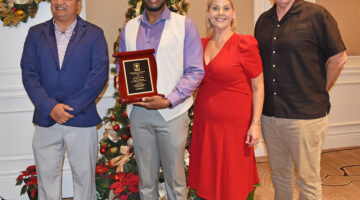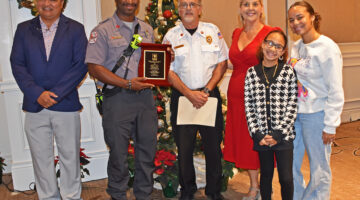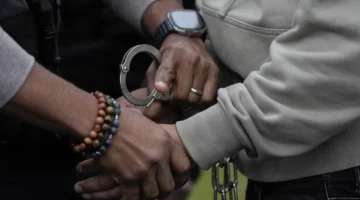Bricks under pavement? X-rays may tell
BY PRU SOWERS
KONK LIFE STAFF WRITER
A grass roots effort to restore brick streets in parts of the historic district streets is gaining traction.
A four-person citizens group has contacted a central Florida surveying company to see if a ground-penetrating radar (GPR) can be used to look beneath the top asphalt coat to see whether portions of the original brick streets remain. Southeastern Surveying and Mapping Corp. came to Key West recently and did a preliminary examination of portions of Front, Greene, Caroline, Southard, Simonton, Fleming and Whitehead streets in the downtown area, according to Commissioner Jimmy Weekley.
While a formal estimate hasn’t been presented yet, Weekley said the cost to use a GPR on approximately seven streets will run between $15,000 and $20,000. That survey could then be used to determine how much it would cost to restore the brick portions of those streets in the historic district.
“It’s not the entire street, just portions,” he said about the idea to uncover and/or replace the original bricks. “It adds to the ambiance of the historic district. There are a lot of other communities we compete with that have bricked streets. It would add to the character of the city, the charm.”
Weekley had originally proposed adding approximately $100,000 to the fiscal year 2015 municipal budget to pay for the x-ray survey. But that was before Southeastern Surveying and Mapping made its preliminary survey.
“It’s going to be much, much less than that [$100,000], we’re happy to find out,” said resident Karl Haffenreffer, a member of the small group of citizens who first broached the idea to commissioners at their June 3 meeting.
Haffenreffer denied reports from both Weekley and city Engineer Jim Bouquet that his group would contribute to the cost of the GPR survey. He also wouldn’t reveal the other members of the group, although his wife, Mary Haffenreffer, joined him at the City Commission podium on June 3.
“We never offered or intended to pay for the x-ray. I want to keep out of it,” he said in a recent phone interview.
However, another interested citizen, Chris Belland, CEO of Historic Tours of America, which runs its Conch Tour Trains from a storefront in the area where the restored brick streets would be, said his company might be willing to contribute to the GPR survey.
“It really is a municipal project,” said Belland. “But we’d be interested in putting in some seed money to see what’s there. We just think it’s one layer of the historic design of the city. It’s easier and cheaper to pave over the bricks. But it’s probably easier and cheaper to tear down the Hemingway House and put up a steel office building,” he said, emphasizing he was using the Hemingway House only as an example of the value of historic restoration.
The challenge won’t be finding money for the survey – Weekley said the money could come out of the city’s contingency fund – but paying for restoring brick streets. Bouquet said if the GPR survey is completed, he and his staff will prepare several different “surface treatment” options for city commissioners to consider. Brick would be one option, as would plain asphalt and “stamped” asphalt or concrete, where a pattern of bricks or cobblestones can be stamped into the top layer of the base material.
However, bricks would likely be the most costly proposition, Bouquet said.
“Bricks are expensive because they have to put them on a concrete or asphalt base. So you’re kind of building a double base,” he said.
[livemarket market_name="KONK Life LiveMarket" limit=3 category=“” show_signup=0 show_more=0]




No Comment